
“Season’s Greenings” from the U.S. Botanic Garden! The colorful holiday lights outside merely hint at the wonders that lie within.
Throughout this series, Tavish the Intrepid Pup has been providing an insider’s guide to the national “howl-iday” scene. In his quest to find the most iconic—and dog-friendly—holiday spots the capital region has to offer, Tavish’s “pick of the day” is the annual Season’s Greenings display at the United States Botanic Garden. The institution falls under the auspices of the Architect of the Capitol. Dating to 1850, it has been in its present location on the wedge of land between Maryland Avenue and First Street, S.W., since 1933.
Okay, let’s just start by saying this place is beautiful year-round and is especially so during the holidays. In a city chock-a-block full of monumental and famous structures, it’d be easy to lose this one in the mix. But to do so would be a big mistake. The Botanic Garden takes the lead on horticultural education and issues of sustainable landscape design. With elaborate outdoor terraces and indoor habitats ranging from desert succulents to exotic orchids, there’s something for everyone. Not too be missed is the unique perspective from atop the canopy walk in the tropical rainforest that grows within conservatory’s 93-foot dome. And be sure to check out the magnificent Bartholdi Fountain set upon two acres of rose gardens just across Independence Avenue.
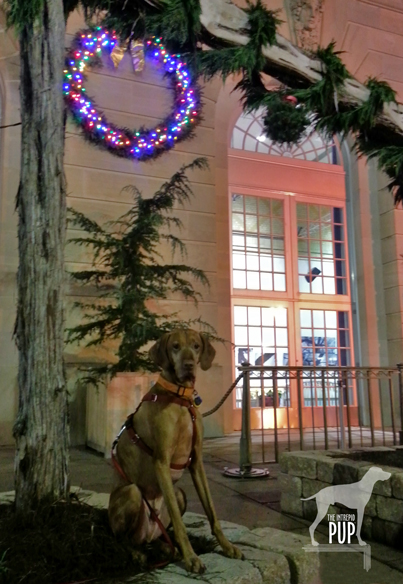
Will sit for kisses: Tavish has strategically planted himself beneath the mistletoe on the northeast terrace.
 Dogging the Details
Dogging the Details
38°53′17.90″N, 77°0′45.46″W
United States Botanic Garden’s “Season’s Greenings”, Washington, DC
Season’s Greenings is on display from late November through early January; check website for exact dates. Admission is free.
Pups aren’t allowed inside the Botanic Garden’s buildings, but fortunately you can lap up pretty good views of Season’s Greenings by peering through the conservatory’s picture windows after dark. One glimpse of the Enchanted Forest in the east gallery is enough to make you want to return on your own to explore inside.
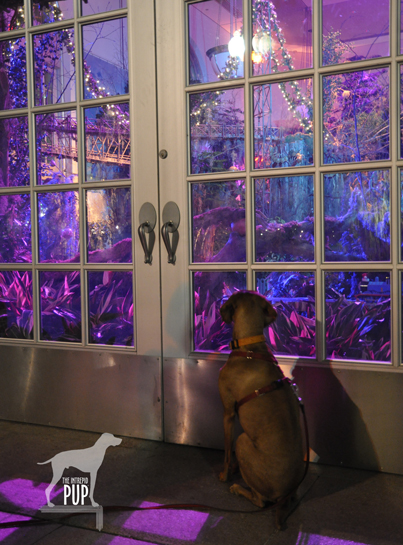
Tavish gazes longingly into the “Enchanted Forest,” just one part of the Season’s Greenings display. Model trains, decorated trees, and fairytale lighting make this a feast for the senses.
Planning for Season’s Greenings takes nearly a year, with the Enchanted Forest alone requiring approximately three weeks to install. It shows in the details. A carpet of poinsettias in 17 varieties. A towering 24-foot tree—one of the largest indoor decorated trees in the region. Eight hundred feet of track for the model railway. A line-up of live music on select evenings. And a mind-boggling assortment of DC landmarks created in miniature and entirely from natural plant materials!
Parking out in front of the Botanic Garden or at meters off Independence Avenue shouldn’t prove too difficult after hours. What’s more, it’s a “two-fer”: soak in the splendor of the lighted gardens and then make the three-minute stroll across the street to take in the Christmas tree on the west lawn of the U. S. Capitol (read the Intrepid Pup’s earlier account here).
A trip to the grounds of the Botanic Gardens earns a “1″ on the Intrepid Pup’s wag-a-meter as a free and pretty spectacular photo opp for you and your intrepid pup!


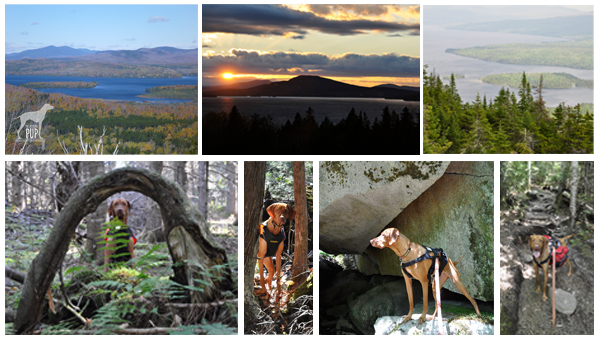


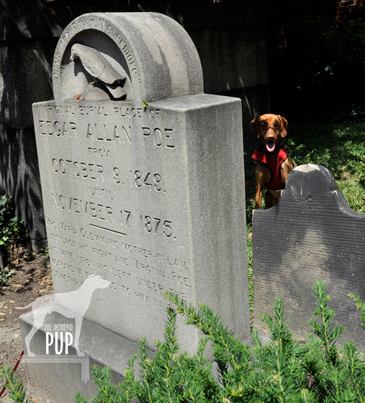
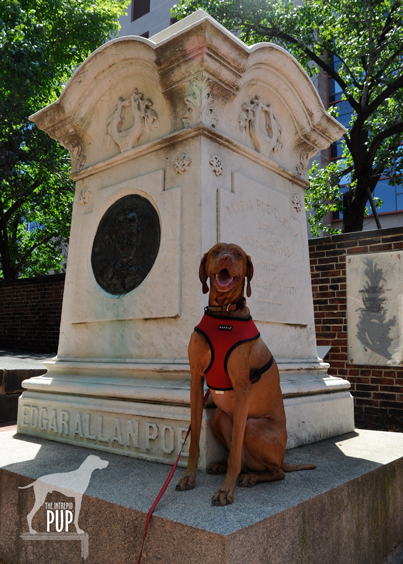
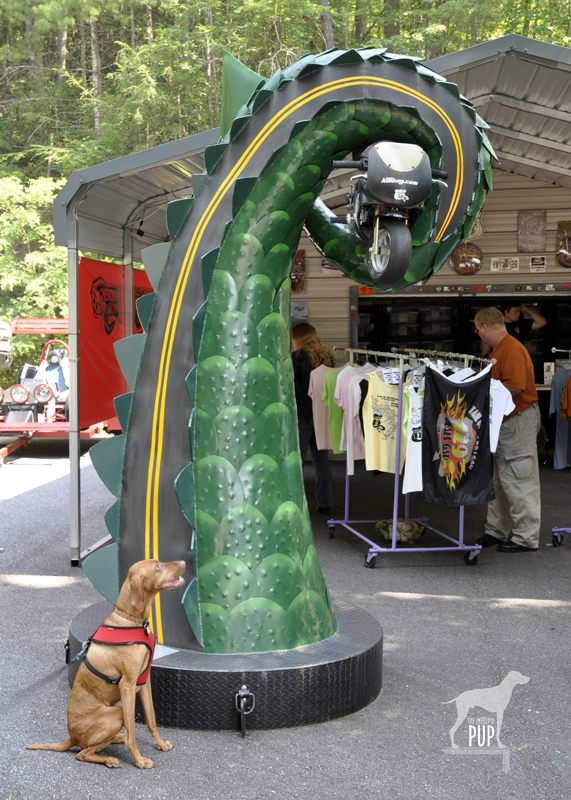
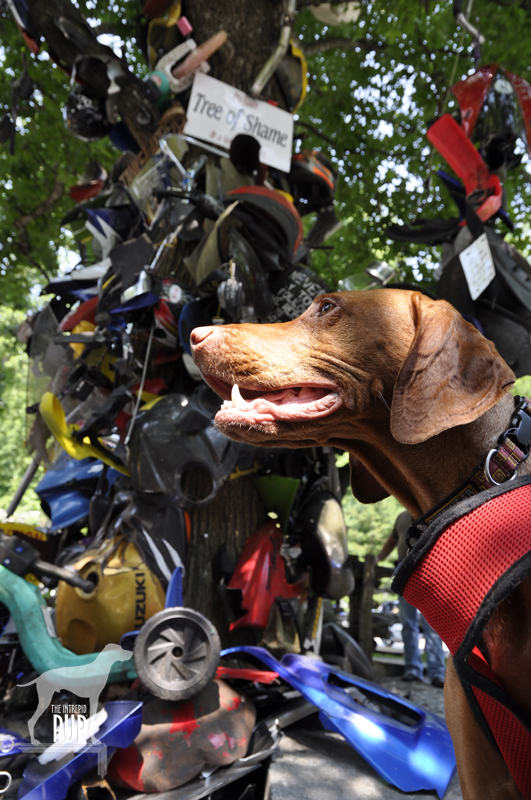
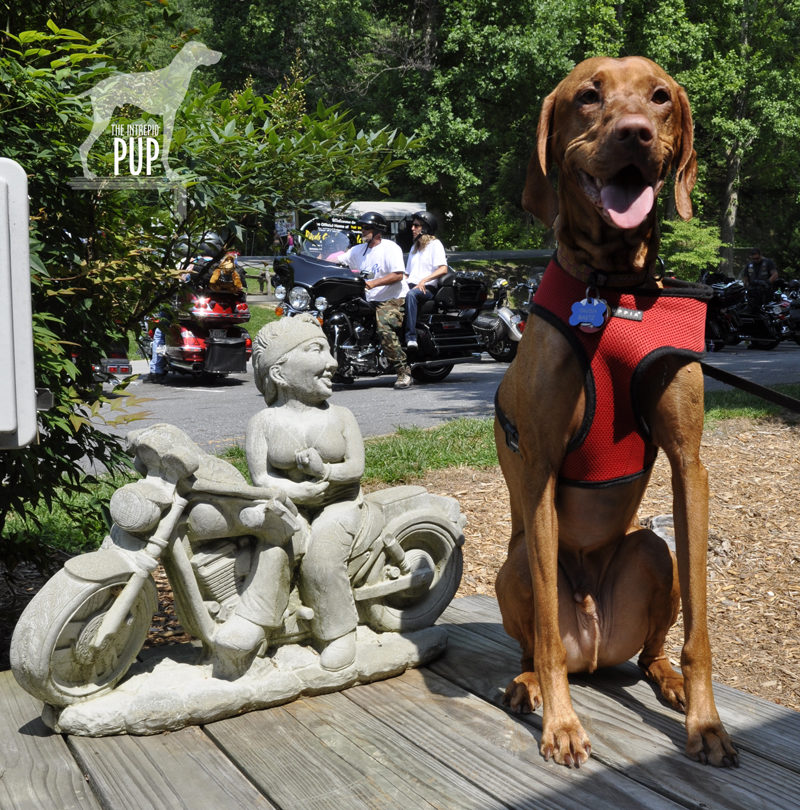 There are two standouts in this spectacle. One is the signature green “tail” pictured above. The other is the Tree of Shame located in the motorcycle resort’s parking lot. This crowd-sourced totem is part whimsy, part rite-of-passage, and part cautionary tale. Basically it’s 20+ years of jetsam—smashed reflectors, blown tires, broken headlights, dented hubcaps, and shorn fenders—lobbed in frustration by those unlucky enough to have been “bitten by the dragon.” The tree is always in flux as pieces get added or otherwise shift among the branches (a nearby sign warns, “CAUTION: Watch for falling parts from Tree of Shame”). It’s also a good reminder that riding the Tail of the Dragon carries an inherent risk; over the past 12 years, there’s been an average of slightly more than two deaths a year.
There are two standouts in this spectacle. One is the signature green “tail” pictured above. The other is the Tree of Shame located in the motorcycle resort’s parking lot. This crowd-sourced totem is part whimsy, part rite-of-passage, and part cautionary tale. Basically it’s 20+ years of jetsam—smashed reflectors, blown tires, broken headlights, dented hubcaps, and shorn fenders—lobbed in frustration by those unlucky enough to have been “bitten by the dragon.” The tree is always in flux as pieces get added or otherwise shift among the branches (a nearby sign warns, “CAUTION: Watch for falling parts from Tree of Shame”). It’s also a good reminder that riding the Tail of the Dragon carries an inherent risk; over the past 12 years, there’s been an average of slightly more than two deaths a year.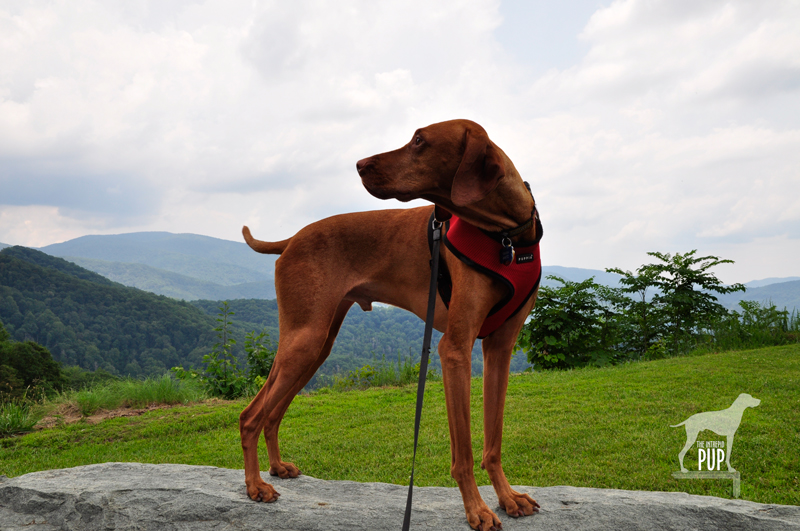
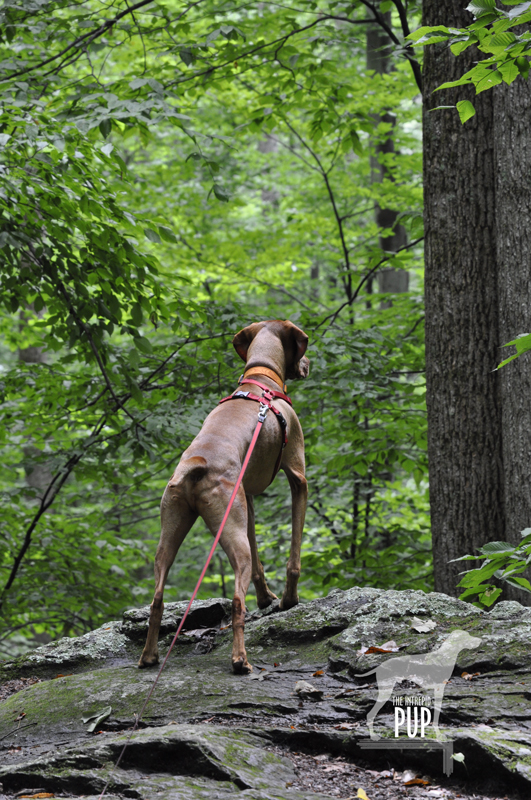
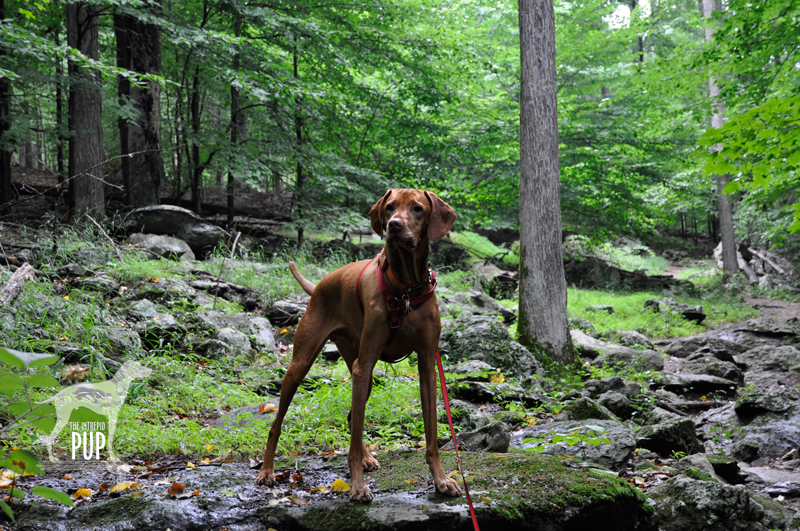
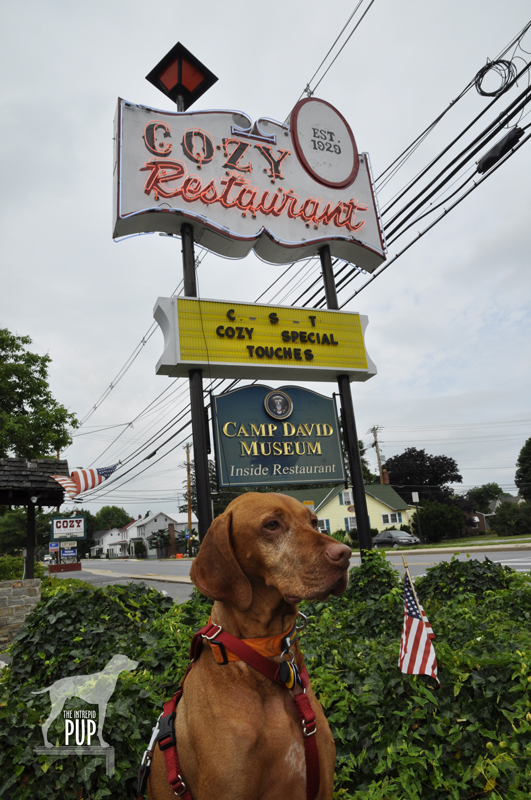 A modest-sized room off the main dining area serves as the gallery chock full of photographs and memorabilia highlighting the Cozy’s Camp David connections to 13 presidential administrations and counting. There’s a perfect photo opp beneath a rustic “Camp David” sign, but sorry, no dogs allowed inside.
A modest-sized room off the main dining area serves as the gallery chock full of photographs and memorabilia highlighting the Cozy’s Camp David connections to 13 presidential administrations and counting. There’s a perfect photo opp beneath a rustic “Camp David” sign, but sorry, no dogs allowed inside.
 It’s an age-old hunt scene with dogs chasing deer, but in this week’s
It’s an age-old hunt scene with dogs chasing deer, but in this week’s 








 to U.S. president Gerald Ford from Ford’s daughter and the White House photographer.
to U.S. president Gerald Ford from Ford’s daughter and the White House photographer.
 Intrepid Pup Yonder is hanging out in today’s
Intrepid Pup Yonder is hanging out in today’s 